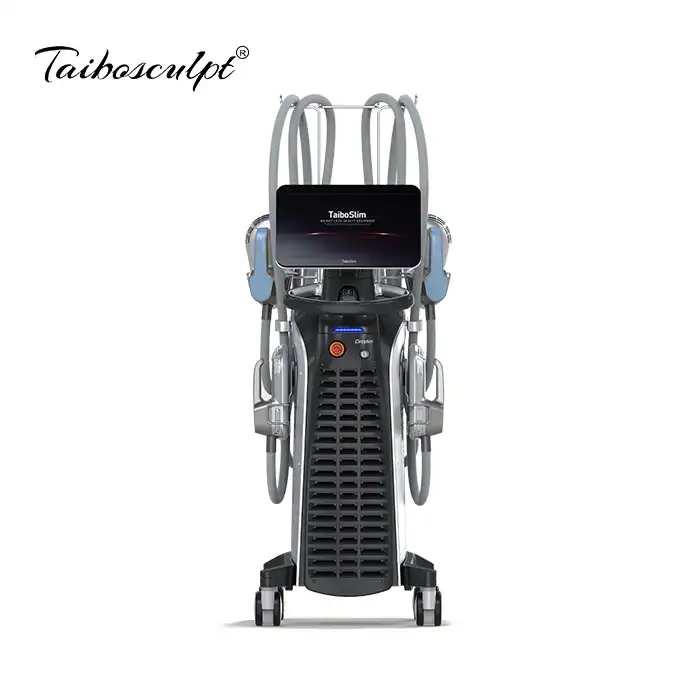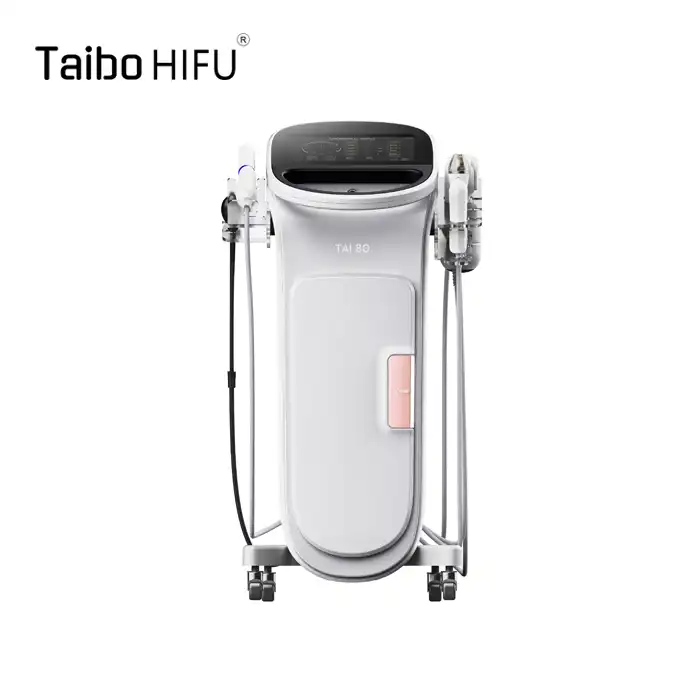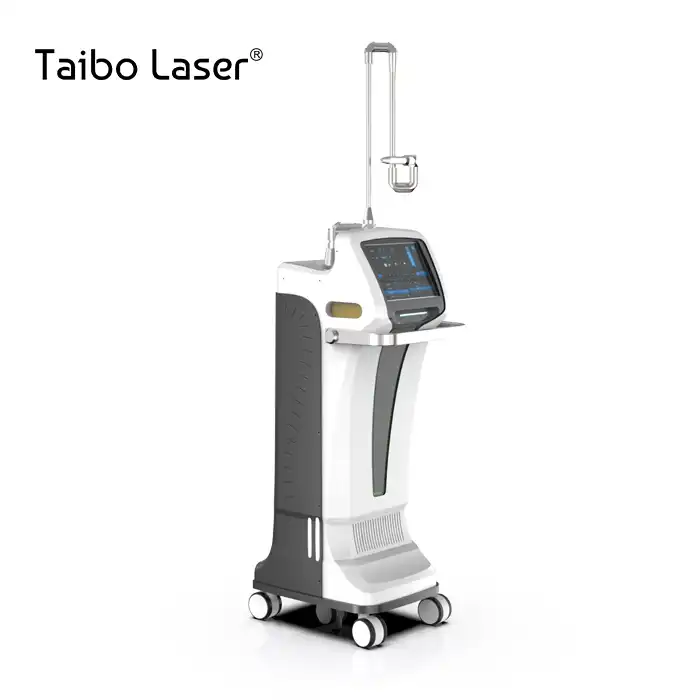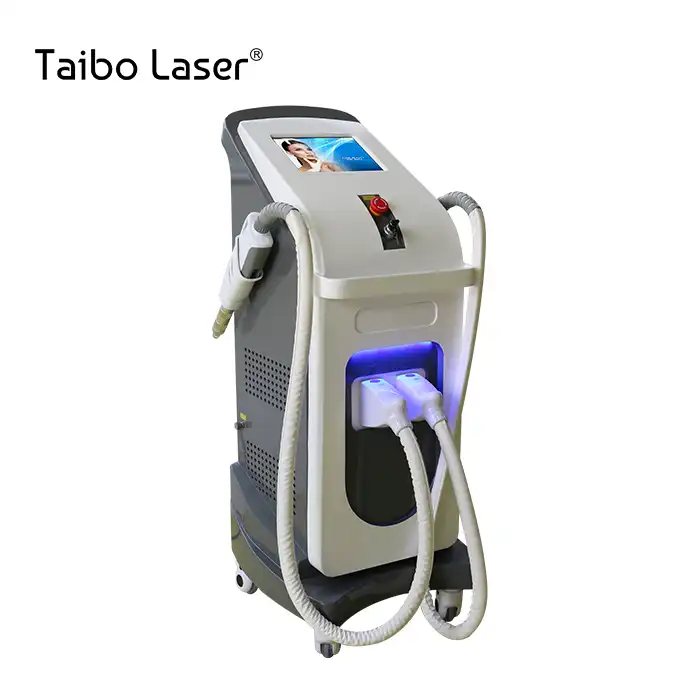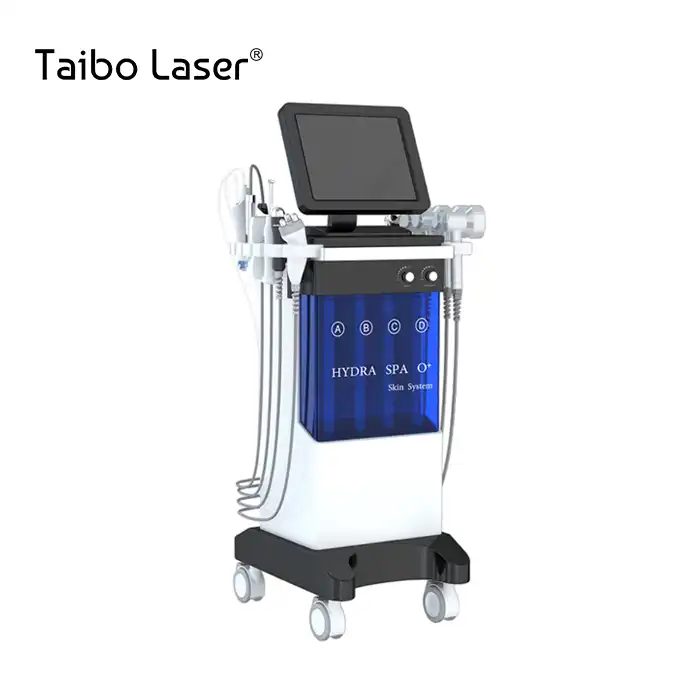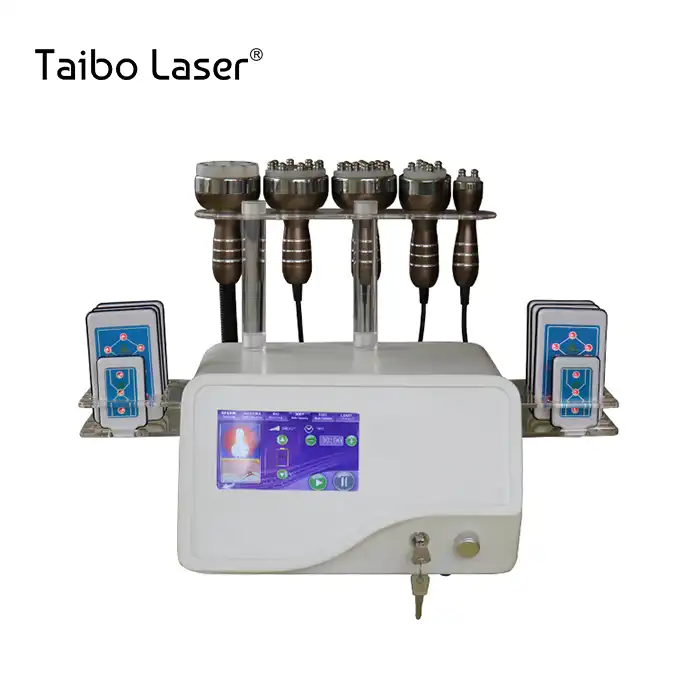
Professional Laser Hair Removal Machine: Buyer’s Quick Guide
2025-08-25 14:50:36
Investing in a professional laser Hair Removal Machine represents a significant decision for beauty salons, dermatology clinics, and cosmetic surgery centers seeking to expand their service offerings. The growing demand for permanent hair removal solutions has created a competitive market where selecting the right equipment can determine business success. A professional laser hair removal machine combines advanced technology with proven safety protocols to deliver consistent, long-lasting results across diverse skin types and hair colors. Understanding the technical specifications, treatment capabilities, and operational requirements becomes essential when evaluating different systems. This comprehensive guide examines the critical factors that influence purchasing decisions, helping professionals navigate the complex landscape of laser hair removal technology to make informed investments that enhance their practice capabilities and client satisfaction.
Understanding Professional Laser Hair Removal Technology
The Science Behind Diode Laser Systems
Professional laser hair removal machines utilize advanced diode laser technology, specifically engineered to target hair follicles with precision while protecting surrounding skin tissue. The 808nm wavelength serves as the gold standard for most hair removal applications, demonstrating optimal absorption by melanin within hair follicles. This professional laser hair removal machine technology works through selective photothermolysis, where concentrated light energy converts to heat, effectively destroying the hair follicle structure without damaging adjacent tissues. The process requires multiple treatment sessions because hair grows in different cycles, and the laser only affects follicles in the active growth phase. Modern professional laser hair removal machines incorporate multiple wavelengths including 755nm, 808nm, and 1064nm to address varying skin types and hair characteristics effectively. The 755nm wavelength proves most effective for lighter skin tones with fine hair, while 808nm provides versatility across all skin types, and 1064nm excels with darker skin tones and coarse hair structures. Some advanced systems include 940nm wavelength, which offers superior oxyhaemoglobin absorption, making it particularly effective for treating vascular components that nourish hair roots. This multi-wavelength approach ensures comprehensive treatment coverage, allowing practitioners to customize protocols based on individual patient characteristics and treatment areas.
Advanced Cooling Systems and Safety Features
Safety represents a paramount concern when operating any professional laser hair removal machine, necessitating sophisticated cooling systems that protect skin integrity during treatment. Contemporary machines employ multiple cooling mechanisms including sapphire contact cooling, dynamic cooling devices, and cryogen spray systems that maintain optimal skin temperature throughout the procedure. The combination of semiconductor cooling, water circulation, and TEC (thermoelectric cooling) technology ensures continuous temperature regulation, minimizing discomfort and reducing the risk of thermal injury. The professional laser hair removal machine incorporates real-time skin monitoring systems that continuously assess tissue temperature and automatically adjust energy delivery parameters. These intelligent safety protocols include motion sensors that halt laser emission if the handpiece loses contact with skin, pulse monitoring systems that prevent overheating, and emergency stop mechanisms accessible to both operator and patient. Additionally, the machines feature adjustable pulse widths ranging from 10-400 milliseconds, allowing practitioners to customize treatment parameters based on hair thickness, skin sensitivity, and treatment area requirements. The integration of these safety features ensures reliable performance while maintaining the highest standards of patient care and treatment efficacy.
Energy Delivery and Spot Size Optimization
Energy density optimization plays a crucial role in achieving effective hair removal results while maintaining patient comfort during treatment sessions. Professional laser hair removal machines typically deliver energy densities between 1-150 J/cm², with precise control mechanisms allowing practitioners to adjust parameters based on individual patient characteristics and treatment objectives. The large spot size of 12x36mm or 12x26mm enables rapid treatment coverage, significantly reducing procedure time while ensuring uniform energy distribution across the treatment area. The professional laser hair removal machine utilizes high-power diode bars, often sourced from American manufacturers like Coherent, ensuring consistent energy output and extended operational lifespan. These premium components can deliver up to 50 million pulses, representing exceptional durability and cost-effectiveness for busy clinical practices. The combination of high power output (ranging from 800W to 3000W) and large spot sizes enables practitioners to treat extensive body areas efficiently, making the technology suitable for both small facial areas and large body regions like legs and backs. The adjustable frequency settings (1-10Hz) provide additional flexibility, allowing operators to optimize treatment speed while maintaining therapeutic effectiveness.
Selecting the Right Professional Laser Hair Removal Machine
Technical Specifications and Performance Criteria
When evaluating professional laser hair removal machine options, understanding technical specifications becomes essential for making informed purchasing decisions. The laser type significantly influences treatment outcomes, with diode lasers generally providing superior results for permanent hair reduction compared to IPL systems. Power output represents another critical consideration, with higher wattage systems typically offering faster treatment times and improved efficacy on coarse, resistant hair types. Machines offering 1200W to 2000W power output demonstrate optimal performance across diverse patient populations. The professional laser hair removal machine should feature an intuitive touchscreen interface, preferably 12-15.6 inches, providing clear visibility of treatment parameters and patient information. Display quality affects operational efficiency, particularly in busy clinical environments where practitioners need quick access to settings adjustments and treatment protocols. The cooling system design influences both patient comfort and safety outcomes, with multi-stage cooling systems offering superior temperature control compared to single-method approaches. Additionally, consider the machine's footprint and mobility features, as space constraints and treatment room configurations may influence equipment selection decisions.
Certification Standards and Regulatory Compliance
Professional laser hair removal machines must meet stringent regulatory requirements to ensure safe operation and legal compliance in commercial settings. CE marking indicates conformity with European safety, health, and environmental protection standards, while ISO13485 certification demonstrates adherence to quality management systems specific to medical devices. These certifications provide assurance that the equipment has undergone rigorous testing and meets international safety standards for professional use. The professional laser hair removal machine should also comply with FDA regulations if intended for use in United States markets, though many international manufacturers are in the process of obtaining FDA clearance. SGS certification provides additional validation of product quality and manufacturing standards, while EMC and LVD compliance ensures electromagnetic compatibility and low voltage directive adherence. When selecting equipment, verify that all necessary certifications are current and applicable to your geographic location, as regulatory requirements vary between countries and regions. Proper certification not only ensures legal compliance but also provides liability protection and demonstrates professional commitment to patient safety.
Vendor Support and Service Considerations
The quality of manufacturer support significantly impacts the long-term success of professional laser hair removal machine investments. Comprehensive warranty coverage, typically ranging from one to two years, should include both parts replacement and technical support services. Evaluate the manufacturer's track record for customer service responsiveness, availability of replacement parts, and technical training programs that ensure optimal equipment utilization. Professional laser hair removal machine suppliers should provide detailed training materials, including video tutorials, operational manuals, and hands-on training sessions that prepare staff for safe and effective equipment operation. Consider vendors offering multilingual support, particularly if your practice serves diverse patient populations or if English is not the primary language of your clinical team. Additionally, assess the manufacturer's global service network, spare parts availability, and upgrade pathways that allow technology enhancement as new features become available. Reliable vendor support ensures minimal downtime, maintains treatment quality, and protects your investment through ongoing technical assistance and equipment maintenance services.

Maximizing Return on Investment and Clinical Success
Treatment Protocols and Patient Selection
Developing effective treatment protocols represents a critical component of successful professional laser hair removal machine implementation in clinical practice. Patient consultation processes should include comprehensive medical history review, skin type assessment using the Fitzpatrick scale, and realistic expectation setting regarding treatment timelines and results. Different anatomical areas require customized approach strategies, with facial treatments typically requiring lower energy settings and more frequent sessions compared to body treatments. The professional laser hair removal machine allows practitioners to customize treatment parameters based on individual patient characteristics, hair density, and skin sensitivity levels. Establishing standardized protocols for different skin types ensures consistent results while minimizing adverse reactions. Pre-treatment preparation guidelines should include sun exposure restrictions, medication reviews that might increase photosensitivity, and proper shaving techniques that optimize laser energy absorption. Post-treatment care instructions help patients achieve optimal results while reducing complications such as hyperpigmentation or skin irritation.
Business Model Integration and Marketing Strategies
Successfully integrating professional laser hair removal machine services requires strategic business planning that addresses pricing structures, appointment scheduling, and staff training requirements. Market research indicates strong demand for laser hair removal services, particularly among demographics seeking convenient, long-term hair reduction solutions. Developing competitive pricing strategies while ensuring profitability requires careful analysis of local market conditions, competitor offerings, and operational costs including equipment depreciation, maintenance, and consumables. The professional laser hair removal machine investment can generate significant revenue streams when properly marketed and managed. Educational marketing approaches that emphasize safety, efficacy, and convenience tend to resonate well with potential clients seeking professional hair removal solutions. Social media platforms, before-and-after photography, and client testimonials provide powerful marketing tools for demonstrating treatment results and building practice reputation. Additionally, package deals and maintenance programs help ensure client retention while providing predictable revenue streams that support equipment financing and business growth objectives.
Quality Assurance and Continuous Improvement
Maintaining consistent treatment quality requires ongoing monitoring of professional laser hair removal machine performance, regular calibration procedures, and systematic documentation of treatment outcomes. Implementing quality assurance protocols helps identify potential issues before they impact patient care, while regular maintenance schedules ensure optimal equipment performance and extend operational lifespan. Staff training programs should include regular updates on new techniques, safety protocols, and equipment features that enhance treatment effectiveness. The professional laser hair removal machine technology continues evolving, with manufacturers regularly introducing enhanced features, improved cooling systems, and refined treatment algorithms. Staying informed about technological advances helps practices remain competitive while providing patients with access to the latest hair removal innovations. Regular performance reviews, patient feedback collection, and outcome tracking provide valuable data for optimizing treatment protocols and identifying areas for improvement. This systematic approach to quality management ensures sustained clinical success and supports positive patient experiences that drive referrals and practice growth.
Conclusion
Selecting the right professional laser hair removal machine requires careful consideration of technical specifications, safety features, and long-term business objectives. The investment represents more than equipment acquisition; it signifies commitment to providing advanced aesthetic services that meet growing market demand. With over 15 years of manufacturing expertise, Xi'an Taibo Laser Beauty Company stands as a trusted professional laser hair removal machine factory, offering comprehensive solutions backed by international certifications and proven technology.
As professional laser hair removal machine suppliers, we understand the challenges facing modern aesthetic practices and provide tailored support that ensures successful equipment integration. Our position among leading professional laser hair removal machine manufacturers reflects our dedication to innovation, quality, and customer satisfaction. For practices seeking reliable China professional laser hair removal machine solutions, our advanced systems combine cutting-edge technology with competitive professional laser hair removal machine price points.
Whether you're expanding existing services or establishing new practice capabilities, our professional laser hair removal machine for sale options provide the foundation for sustained clinical and business success. Contact our expert team at susan@taibobeauty.com to discover how our advanced laser hair removal technology can transform your practice and exceed your patients' expectations. Experience the difference that comes from partnering with industry-leading professional laser hair removal machine manufacturers committed to your success.
References
1. Anderson, R.R., Parrish, J.A. "Selective photothermolysis: precise microsurgery by selective absorption of pulsed radiation." Science, vol. 220, no. 4596, pp. 524-527, 1983.
2. Grossman, M.C., Dierickx, C., Farinelli, W., Flotte, T., Anderson, R.R. "Damage to hair follicles by normal-mode ruby laser pulses." Journal of the American Academy of Dermatology, vol. 35, no. 6, pp. 889-894, 1996.
3. Campos, V.B., Dierickx, C.C., Farinelli, W.A., Lin, T.Y., Manuskiatti, W., Anderson, R.R. "Hair removal with an 800-nm pulsed diode laser." Journal of the American Academy of Dermatology, vol. 43, no. 3, pp. 442-447, 2000.
4. Ross, E.V., Ladin, Z., Kreindel, M., Dierickx, C. "Theoretical considerations in laser hair removal." Dermatologic Clinics, vol. 17, no. 2, pp. 333-355, 1999.
YOU MAY LIKE













